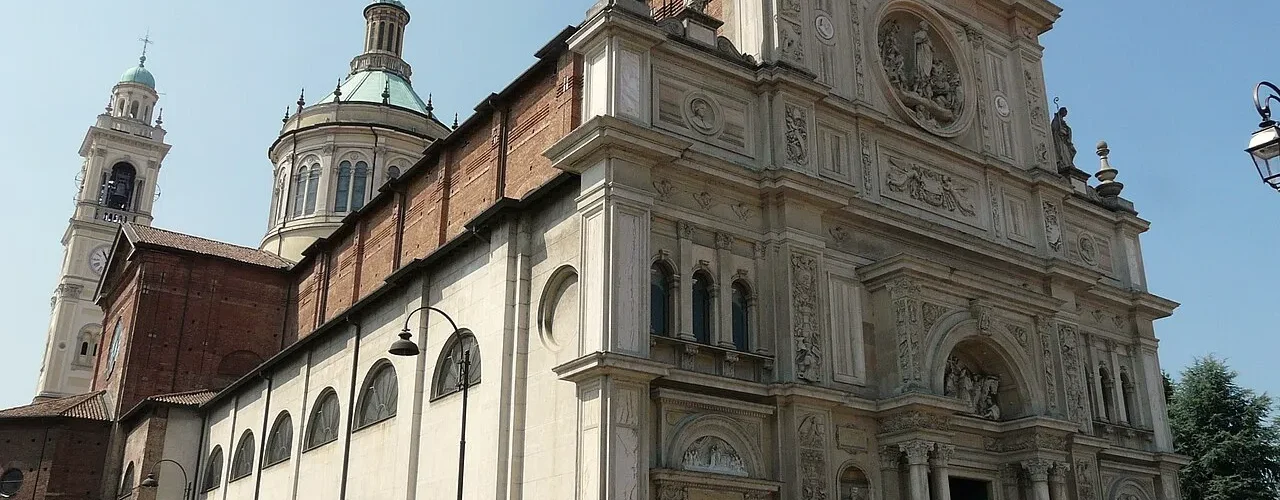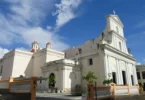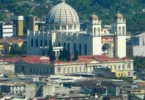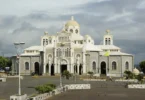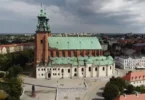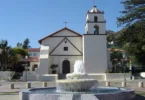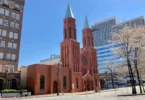Introduction
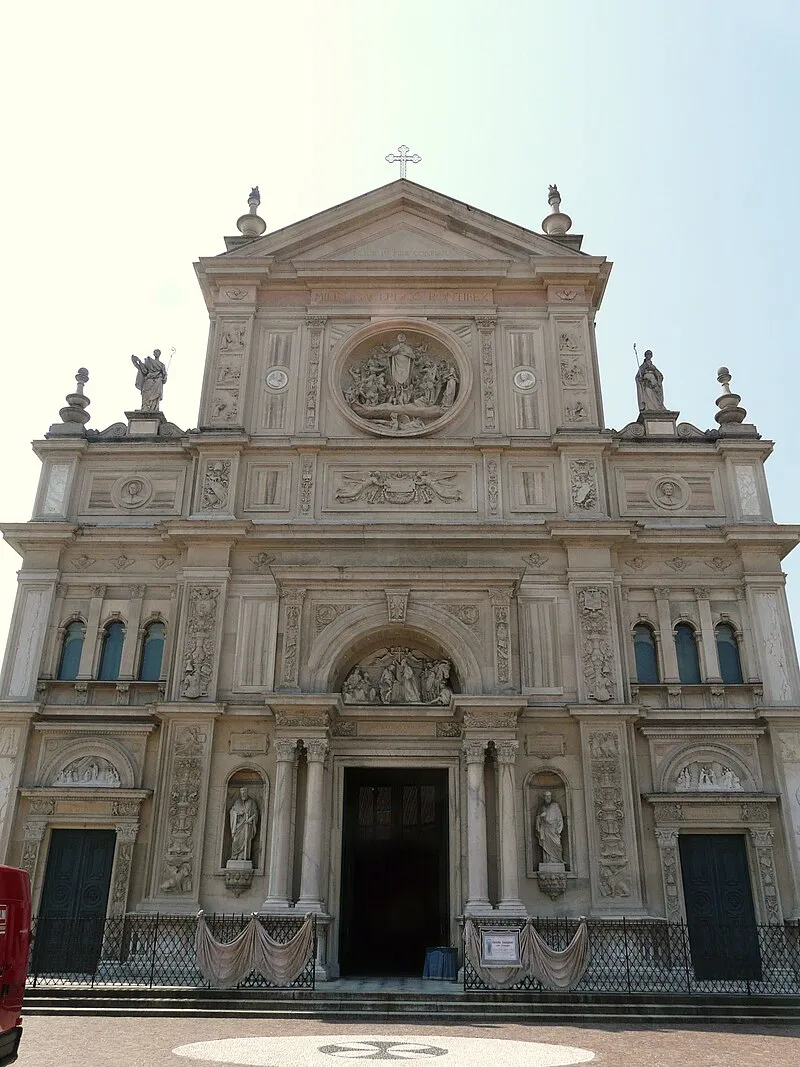
The Basilica of San Martino, officially named the Parish Church of the Minor Roman Basilica of San Martino, Bishop of Tours, and San Gioacchino, serves as the primary Catholic place of worship in Magenta, located in the province of Milan.
Currently, the basilica hosts the Deanery of Magenta, which is an important division within the Archdiocese of Milan. This deanery functions as a modern territorial unit, replacing some of the historical responsibilities previously managed by the nearby parish of Corbetta. The Deanery Council consists of the parish priests and other clergy members from the deanery, who work together to oversee the region’s religious affairs.
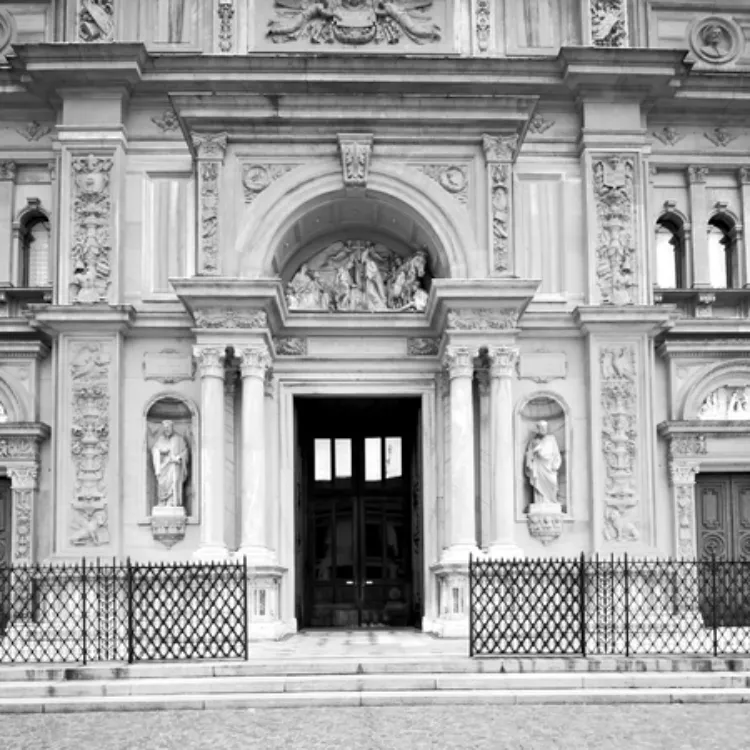
The Origin and Development of the Basilica of San Martino
The idea to build a new temple in Magenta was proposed by Don Cesare Tragella, the provost vicar forane of the town from 1885 to 1910. His vision was twofold: to provide the ever-growing population of Magenta with a larger place of worship and to commemorate those who fell in the glorious Battle of Magenta on June 4, 1859. The victory in this battle remains a significant and lively part of Magenta’s history, deeply involving the local community.
Design and Construction
The church, dedicated to Saint Martin of Tours and Saint Joachim, was designed by architect Alfonso Parrocchetti. Parrocchetti’s design followed a neo-Renaissance style, featuring a large central nave flanked by two narrower and lower side aisles. The dimensions of the basilica are impressive: it stretches 87 meters in length, with a transept length of 30 meters and a lantern height of 57 meters. These dimensions make it the largest church in the diocese after the Milan Cathedral.
The foundation stone was laid in 1893, and despite several technical and financial challenges, construction progressed thanks to the voluntary labor of parishioners. By 1901, the church structure was completed, and the first Mass was celebrated at an improvised altar. The basilica was consecrated on October 24, 1903, by Cardinal Andrea Carlo Ferrari, the Archbishop of Milan. However, Cardinal Ferrari forbade the transportation of the remains of the fallen soldiers into the church, thus removing one of the original motivations for building the church.
Completion and Inauguration
The basilica was further enhanced by the addition of a 72-meter bell tower, designed in the same neo-Renaissance style. The artistic work was done by Benedetti, while the structural work was the responsibility of engineer Monti. The bell tower was inaugurated on November 15, 1913, by Cardinal Ferrari.
The construction of the basilica’s facade began in 1932 and faced significant delays due to financial constraints and the impact of war. It was not until 1959 that the facade was completed, and it was inaugurated on June 4 of that year by Archbishop Giovanni Battista Montini, who would later become Pope Paul VI. In 1948, Pope Pius XII granted ecclesiastical recognition by elevating the church to the status of a minor Roman basilica.
Notable Events and Recognition
The basilica also holds personal significance for many. In 1955, the wedding of Saint Gianna Beretta Molla and her husband Pietro took place in the church. On September 30, 2012, Cardinal Angelo Scola celebrated a Mass with the entire Deanery of Magenta to mark the 90th anniversary of Saint Gianna Beretta Molla’s birth, honoring her as the patron saint of families.
Architecture of Basilica of San Martino, Magenta, Italy
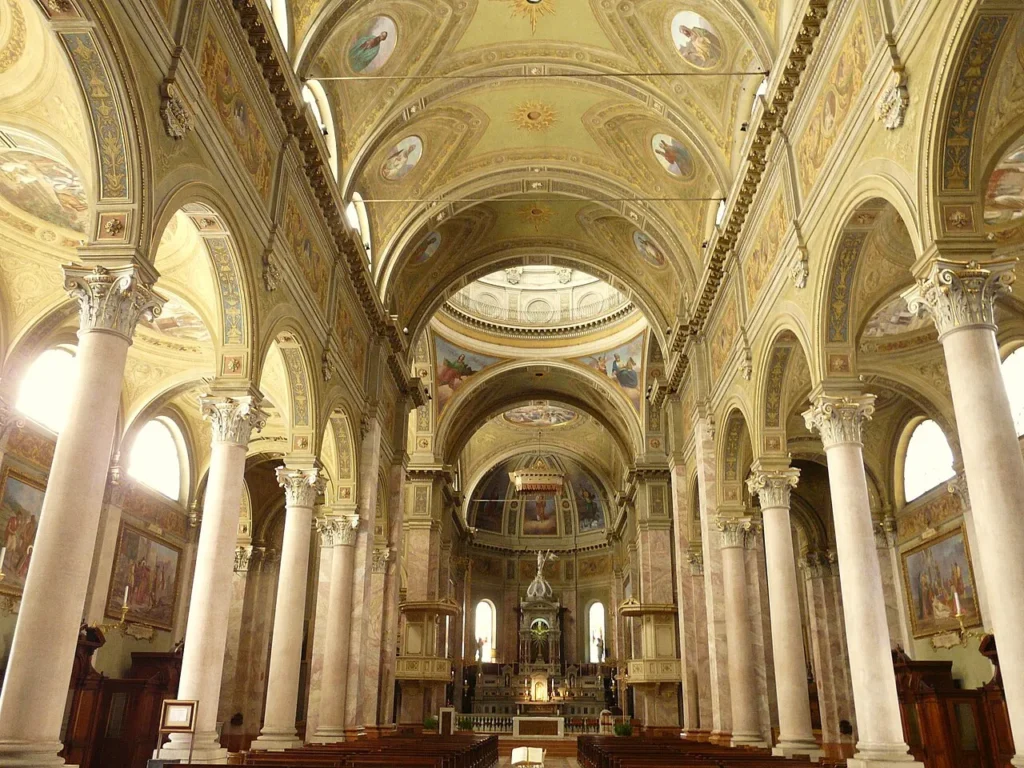
Architectural Style: Renaissance Revival Architecture
The Facade
The facade of the Basilica of San Martino was constructed between 1932 and 1959, following the design of architect Mariani. Featuring a prominent structure, it is adorned with bas-reliefs that depict various Scenes from the Life of Saint Martin. At the center, a large central portal opens through an arched porch, supported by four Corinthian-style columns. Above the columns, in the lunette, a bas-relief shows the Baptism of Saint Martin. On either side of the columns are statues of the apostles Peter and Paul, placed in niches.
Above the portal is a sculpted circular rose window, which depicts the Glory of Saint Martin, with the saint’s figure prominently larger than the surrounding figures. Above the two side naves, which are lower than the central nave and each contain a three-light window and a portal with a lunette, are statues of two notable Milanese bishops: Saint Ambrose on the left nave and Saint Charles Borromeo on the right.
At the intersection of the nave and transept, the dome rises, illuminated by large mullioned windows. It is topped with a statue of Christ the Redeemer, made of embossed and gilded copper sheet. Adjacent to the apse stands the bell tower, an important feature of the church’s exterior.
The Interior
The interior of the basilica follows the shape of a Latin cross and is divided into three naves by two rows of marble Corinthian columns.
The high altar, designed by architect Parrocchetti, is a significant work crafted from polychrome marble. The altar rests on four white marble columns. Between these columns, a metal bas-relief depicting the Last Supper is displayed. Above the altar, a ciborium is surmounted by a statue of the risen Christ.
In the 1960s, a new polychrome marble floor was installed. The final interior touches were completed in the 1990s with the expansion of the presbytery, which now includes the presidential seat, the pulpit, and the basilica altar made of white marble with bronze bas-reliefs. These elements extend up to the dome.
On the left arm of the transept lies the chapel dedicated to Madonna del Rosario, also designed by Parrocchetti. The altar, crafted by woodworker Galli, sits within the chapel. Surrounding this chapel are two smaller ones, dedicated to Saint Francis and Saint Joseph.
In the right arm of the transept is the chapel of Santa Crescenzia, another creation of Parrocchetti. The altar, made of painted wood by craftsman Miramonti, holds an urn containing the remains of the martyr. On the sides of this chapel are two other smaller chapels, dedicated to the Sacred Heart and the Holy Crucifix.
Among the numerous frescoes decorating the basilica, those created in the early 20th century by Valtorta and her disciples stand out. The dome was frescoed in the 1960s by Conconi of Como, depicting major and minor prophets as well as the four evangelists.
Pipe Organs in the Basilica
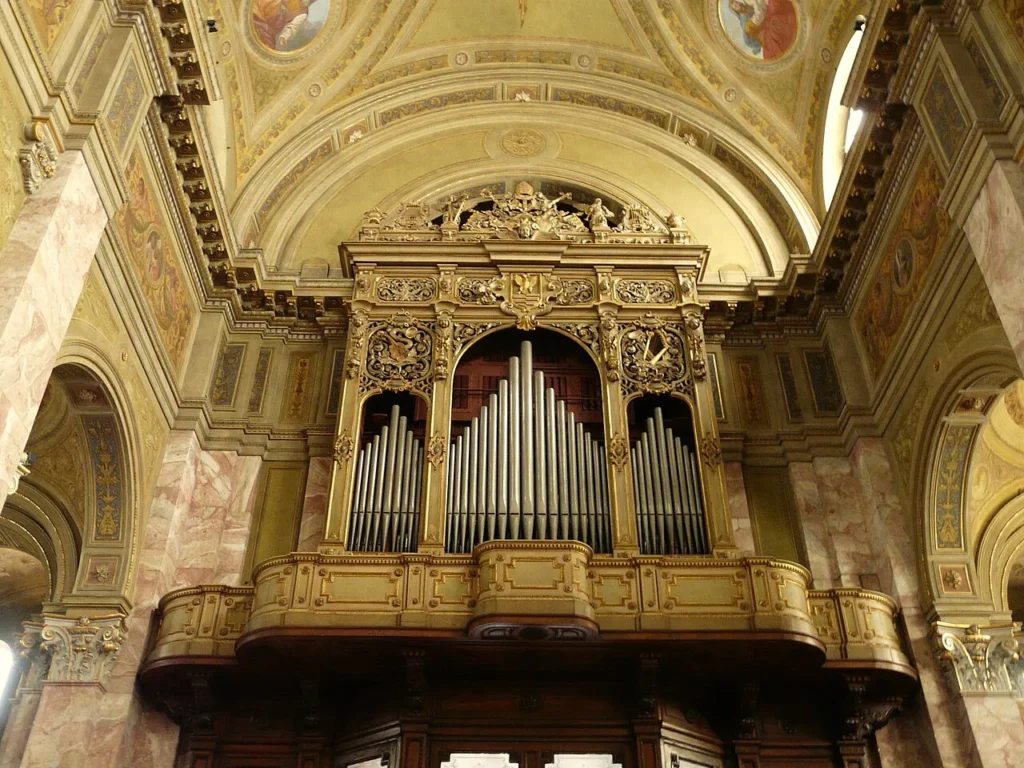
Major Organ: The Prestinari Organ
Located in the choir loft on the counter-façade, the Prestinari Organ stands in a monumental case crafted by Corneo, a local artisan from Magenta. Originally built in 1860 by the Prestinari organ builders for the old church, the organ was moved to the new basilica in 1904, during which time it was completely overhauled and expanded by Giovanni Bressani of Milan. Bressani added the Eco Organ as part of the restoration.
This grand organ consists of 35 pipes, divided into 3 spans and arranged in a cusp shape within each respective span. The largest pipe corresponds to the F-1 (12′) Principal 8′ Bass of the Grand Organ. The instrument features mechanical transmission and two keyboards: the first, for the Eco Organ, has 61 notes, ranging from C1 to C6, and the second, for the Grand Organ, has 68 notes, ranging from F-1 to C6. The division between the bass registers and soprano registers occurs between B2 and C3. The organ also has a straight pedalboard with 27 notes, ranging from C1 to D3.
The organ controls include levers for various registers, arranged in three columns—two to the right and one to the left of the console. Additionally, there are pedals for Free Combination in the Lombard style, the Tiratutti del Ripieno for both the Grand and Eco Organs, and a pedal for the Snare Drum. Above the pedalboard, there is a bracket for the expression of the Eco Organ.
The organ underwent a restoration in 1991, ensuring its continued functionality and preserving its historic significance.
Choral Organ
In the main apse, above a special wooden choir, a second pipe organ is positioned for liturgical use. Built in 1903 by Giovanni Bressani with mechanical transmission, this organ was later electrified and fitted with a new console in the 1990s. It features a single keyboard and a pedalboard with 12 registers, primarily used for accompaniment during services.
The Bells of the Basilica
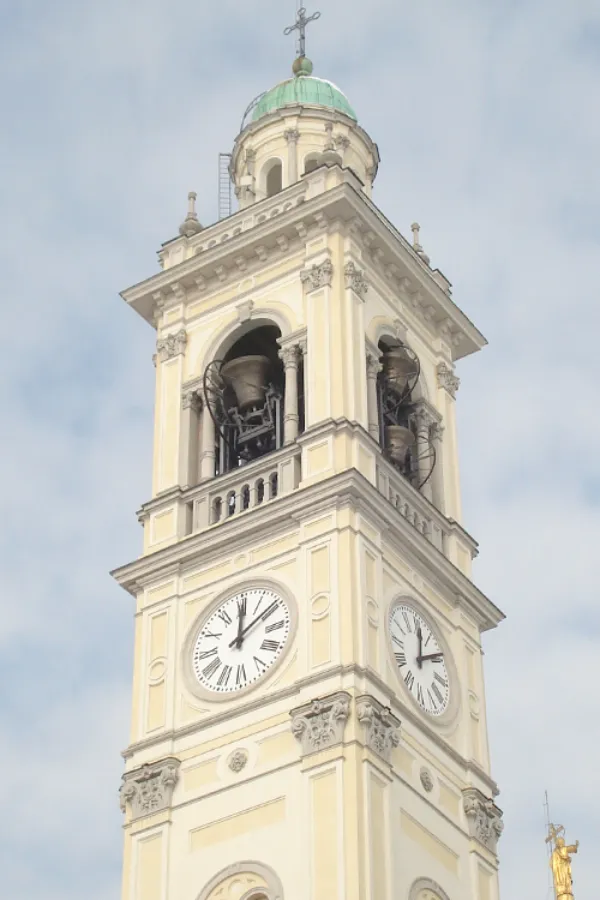
The Basilica of San Martino houses a concert of eight bells, which were cast in 1964 by Paolo Capanni from Castelnovo ne’ Monti (RE). These bells are tuned in A2 Major and ring according to the Ambrosian system.
Originally, in 1858, the bell tower of the old church of San Martino was equipped with a set of six bells tuned in Bb2 Major. These bells were cast by Felice Bizzozero of Varese and were a generous gift from Archduke Maximilian of Austria, who dedicated the largest bell, weighing 2420 kg, to himself.
At the dawn of the 20th century, following the consecration of the new provost church of San Martino and San Gioacchino, and the subsequent demolition of the old church, the decision was made to construct a new bell tower. The six bells from the old church’s bell tower were transferred to the new one, and the concert was expanded to eight bells, with the addition of two smaller bells.
However, during World War II, in 1943, the two larger bells and the smallest bell were removed as part of the wartime requisition. After the conflict, the entire bell concert was recast by Carlo Ottolina and Sons from Seregno (MB). The new set of bells was inaugurated on 12 October 1947 to mark the city of Magenta receiving its official title. Unfortunately, this new concert did not meet expectations, leading to another recasting in 1964, this time in A2 Major to improve the sound quality.
Feast Day
Feast Day : 11th November
The Feast Day of the Basilica of San Martino in Magenta, Italy, is celebrated on November 11th, in honor of Saint Martin of Tours, the patron saint of the church. Saint Martin is revered for his charitable acts, particularly for his famous gesture of sharing his cloak with a beggar, which is symbolic of his kindness and generosity. This feast day marks a significant event for the basilica and the local community, with various religious ceremonies and festivities taking place in recognition of the saint’s life and contributions to the Christian faith.
Church Mass Timing
Monday : 8.00 am and 6.00 pm
Tuesday : 8.00 am and 6.00 pm
Wednesday : 8.00 am and 6.00 pm
Thursday : 8.00 am and 6.00 pm
Friday : 8.00 am and 6.00 pm
Saturday : 8.00 am and 6.00 pm
Sunday : 8.30 am, 10.00 am and 6.00 pm
Church Opening Time:
Monday : 9:30 am – 11:30 am, 3:30 pm – 5:30 pm
Tuesday : 9:30 am – 11:30 am, 3:30 pm – 5:30 pm
Wednesday : 9:30 am – 11:30 am, 3:30 pm – 5:30 pm
Thursday : 4:30 pm – 6:30 pm
Friday : 9:30 am – 11:30 am
Contact Info
Address:
Via Roma, 39, 20013 Magenta MI, Italy.
Phone : +390297298342
Accommodations
Connectivities
Airway
Milan Malpensa Airport (MXP) to Basilica of San Martino, Magenta, Italy distance between 23 min (27.8 km) via SS336dir.
Railway
Magenta Railway Station to Basilica of San Martino, Magenta, Italy distance between 5 min (2.3 km) via Via G. Brocca.

